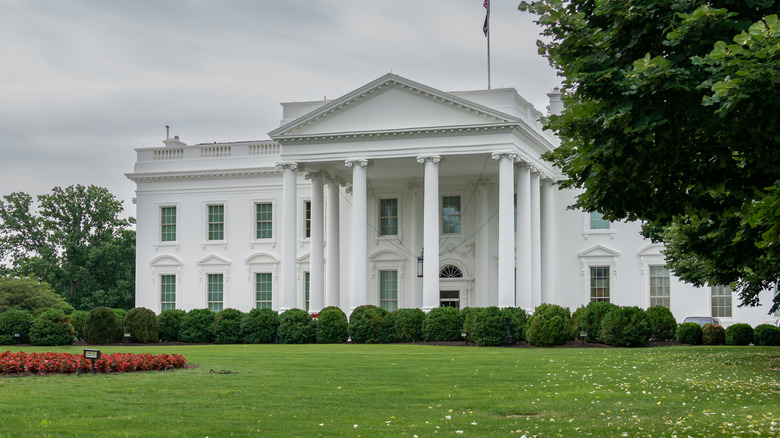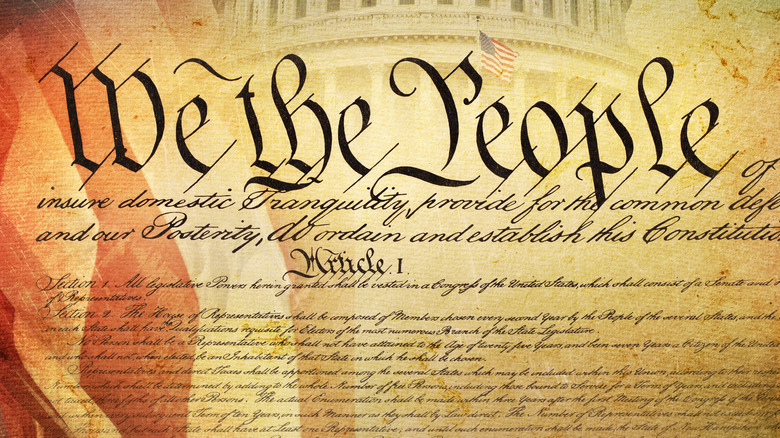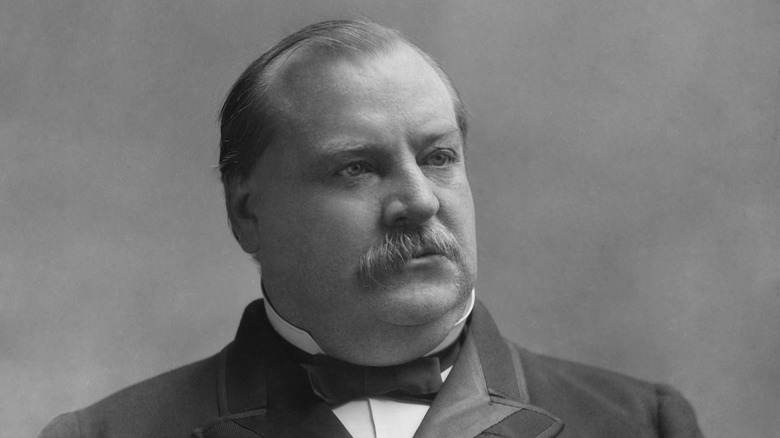Only One US President Was Successfully Elected In Non-Consecutive Terms
On November 15, 2022, as ABC News reported at the time, Donald Trump announced that he is running for president in 2024, his third run for office. Trump was the 45th president — he served a single term between 2017 and 2021 — but he lost his bid for reelection, and Joe Biden was inaugurated as the 46th president in January 2021. It bears noting, however, that Trump has repeatedly said the 2022 election was rigged and stolen and that he was and is the rightful winner.
Should Trump win in 2024 and subsequently be inaugurated in 2025, he would be the second person to serve non-consecutive terms in office, the first being Grover Cleveland, who served as the 22nd president (1885-1889) and 24th president (1893-1897), according to the White House website. In this bit of history, Benjamin Harrison served in the years between two non-consecutive terms — a role Joe Biden might ultimately fall into.
The Constitution and the President's Term Limits
The United States Constitution lays out how the president is elected and how his (or her) terms of office are managed. To make a long story short, the president is elected to a four-year term; if they ascend to office because their predecessor dies, they finish the remainder of the original person's term and then are up for reelection when the original person's term would have ended. The 22nd Amendment clarifies things even more. Following Franklin Delano Roosevelt's four terms in office, the document was amended to limit the POTUS to two terms, consecutive or not, plus adding some language to limit the length of time someone can serve if they ascended to the job of POTUS because of the vacation of the previous president.
Grover Cleveland's two terms precede the 22nd Amendment, however. That means that, though his terms in office lasted the specified four-year period, there was no limit to how many he could have served, although he only served two.
Grover Cleveland's Non-Consecutive Temrs
Grover Cleveland was a prominent politician who had served as governor of New York before being elected POTUS in 1884. As the White House website notes, Cleveland was a Democrat — the first Democrat elected after the Civil War — who won partially on the strength of Republicans who were dissatisfied with their own candidate, James G. Blaine.
Cleveland was not reelected in 1888, however. Though he did win the popular vote, his opponent, Benjamin Harrison, took home a majority of Electoral College votes. As The New York Times reports, he took a job with a New York City law firm and spent the next four years as a private citizen. However, in 1892, the Democrats came calling again, and he was reelected, this time to be the president of a country facing a severe depression. How well he handled the job is best left to historians and economists, but by the end of his second term — which, it bears noting, did not have to be his final one, per the Constitution in effect at the time — his party had abandoned him and nominated William Jennings Bryan instead. Bryan lost in a landslide, both in terms of the popular vote and the electoral vote, to William McKinley.


